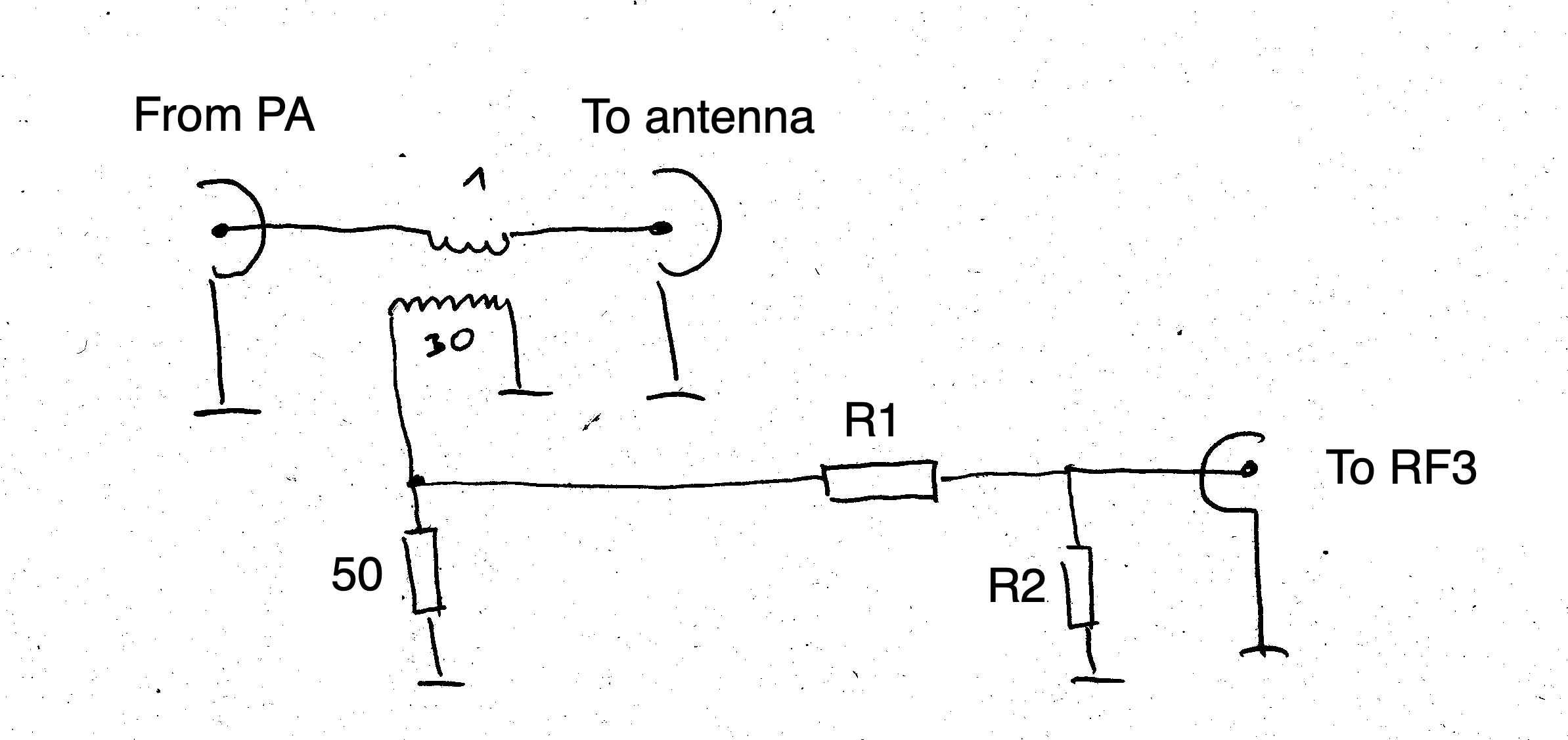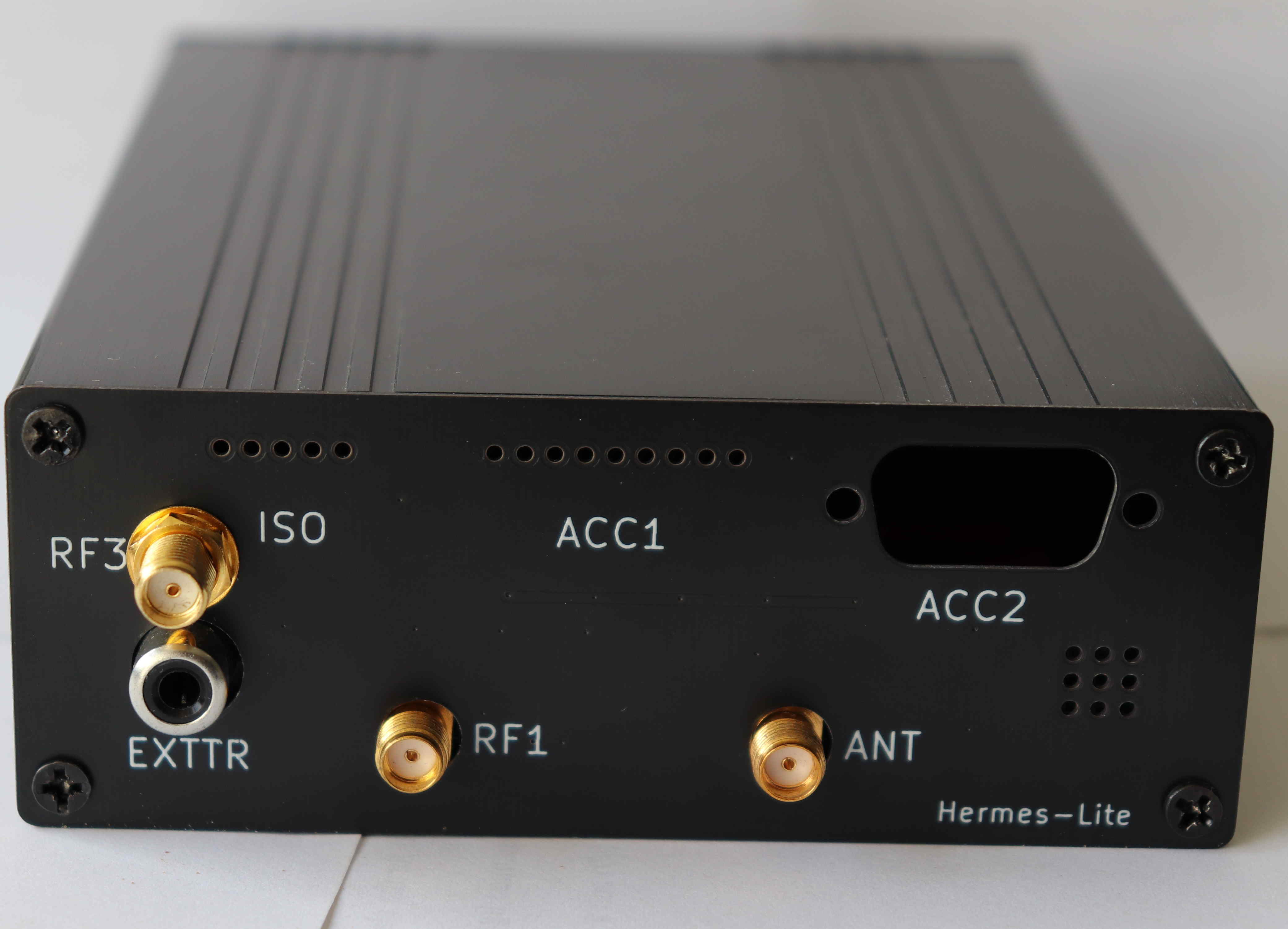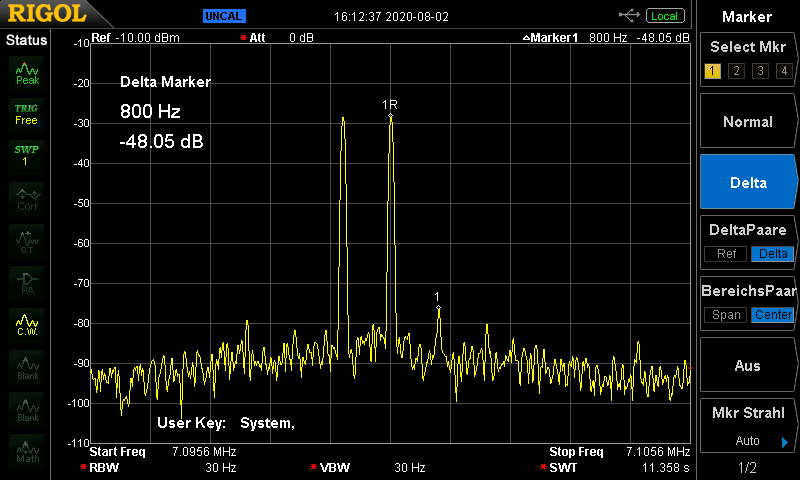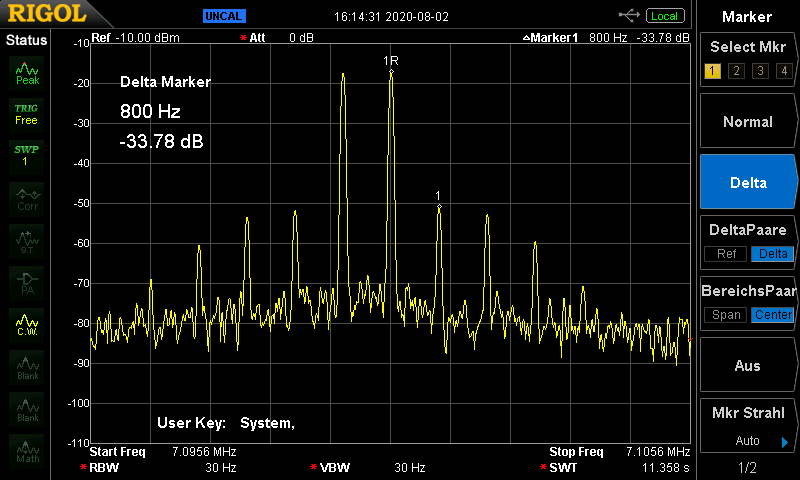To this end, in my version of the piHPSDR program (on github.com/dl1ycf) the preamp range is +2 to +33 dB if "Internal" feedback is chosen in the PS menu (see pictures) while the range -12 to +19 dB is chosen if either "EXT1" or "ByPass" feedback is chosen. Note that there are no relays within the HL2 that control the feedback path, so the only effect of the choice "Internal" vs. "EXT1" is the mapping of the TX-att values to preamp settings.
With "Internal" feedback selected, PURESIGNAL worked well with "cross-talk" feedback from 160m to 10m.
In the following, I show some screen-shots from the piHPSDR program to demonstrate the effectiveness of PURESIGNAL on 160m and 10m, followed by a measurement with an external spectrum analyzer on the 20m band to show that the display of piHPSDR actually shows the reality. The following six pictures all are at least 800 pixels wide but displayed smaller to get them side-by-side. You can easily display them enlarged.
We start with 160m (left: PURESIGNAL off, right: PURESIGNAL on). One sees that the feedback level calibration loop has found optimum feedback with TXatt=1, meaning that the preamp is set to +32 dB. To the left, one sees the uncorrected signal from the HL2 PA which shows IM3 about 35 dBc, and this improves to about 50 dBc with PURESIGNAL active.
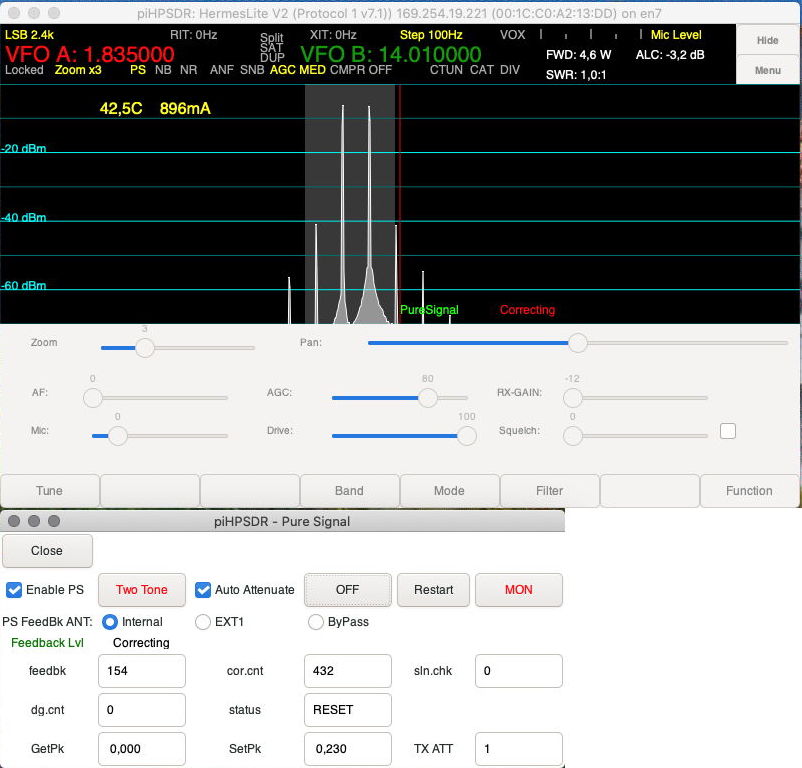
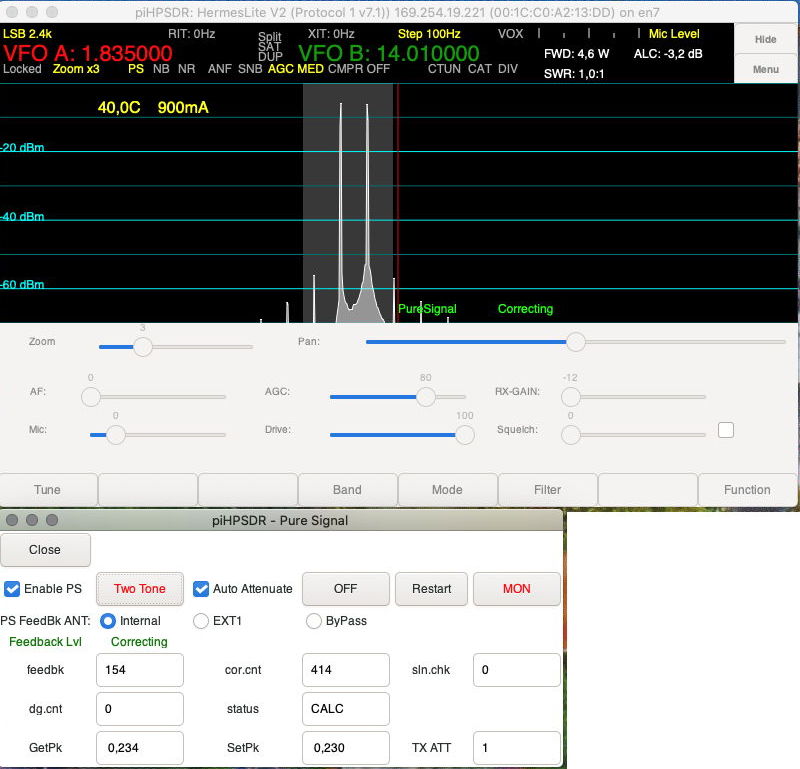
Now, we show the same on the 10m band and get essentially the same result, except that the optimum TXatt value now is 22, which maps to a preamp setting of +11 dB. These settings are determined by the PURESIGNAL calibration loop of the piHPSDR software and match the expectations based on the measured TRX relay cross-talk.

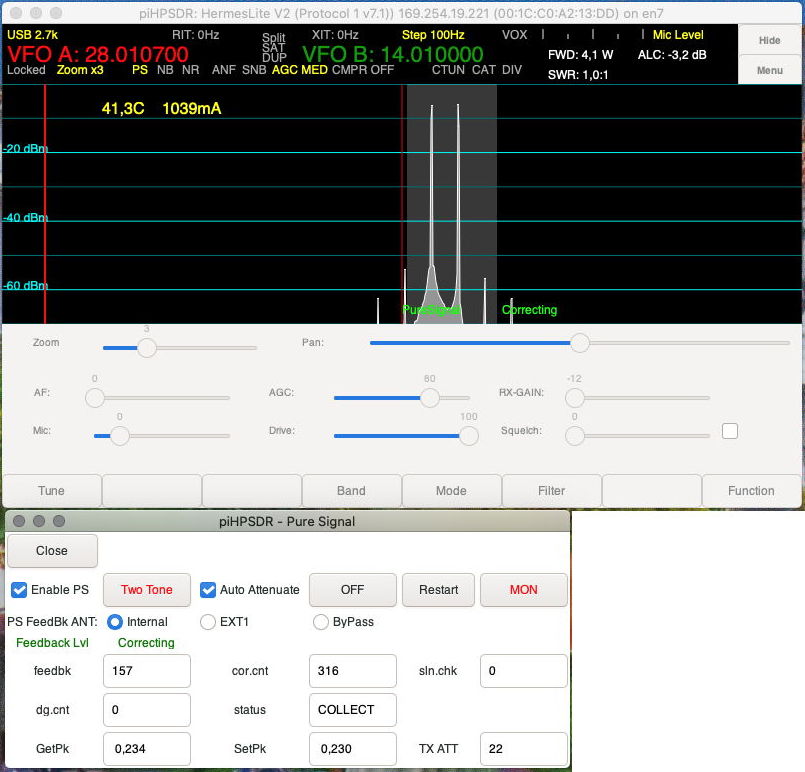
Now the proof of the pudding definitely is in the eating, so we show the HL2 output signals measured with a spectrum analyzer on the 20m band. The figures (IM3 of 50dBc/35dBc with/without PURESIGNAL active) are the same as those derived from piHPSDR's panadapter (left panel: without PURESIGNAL, right panel: with PURESIGNAL)




